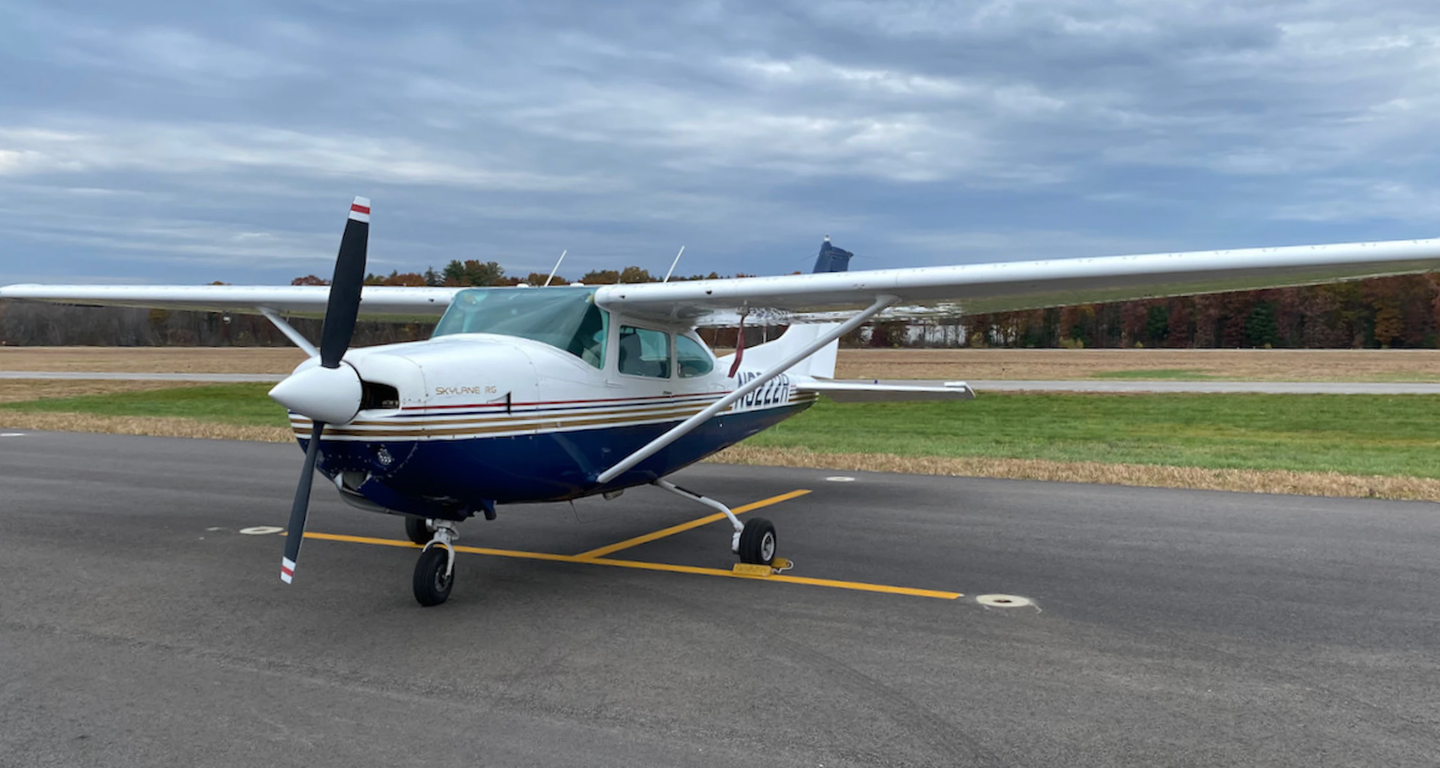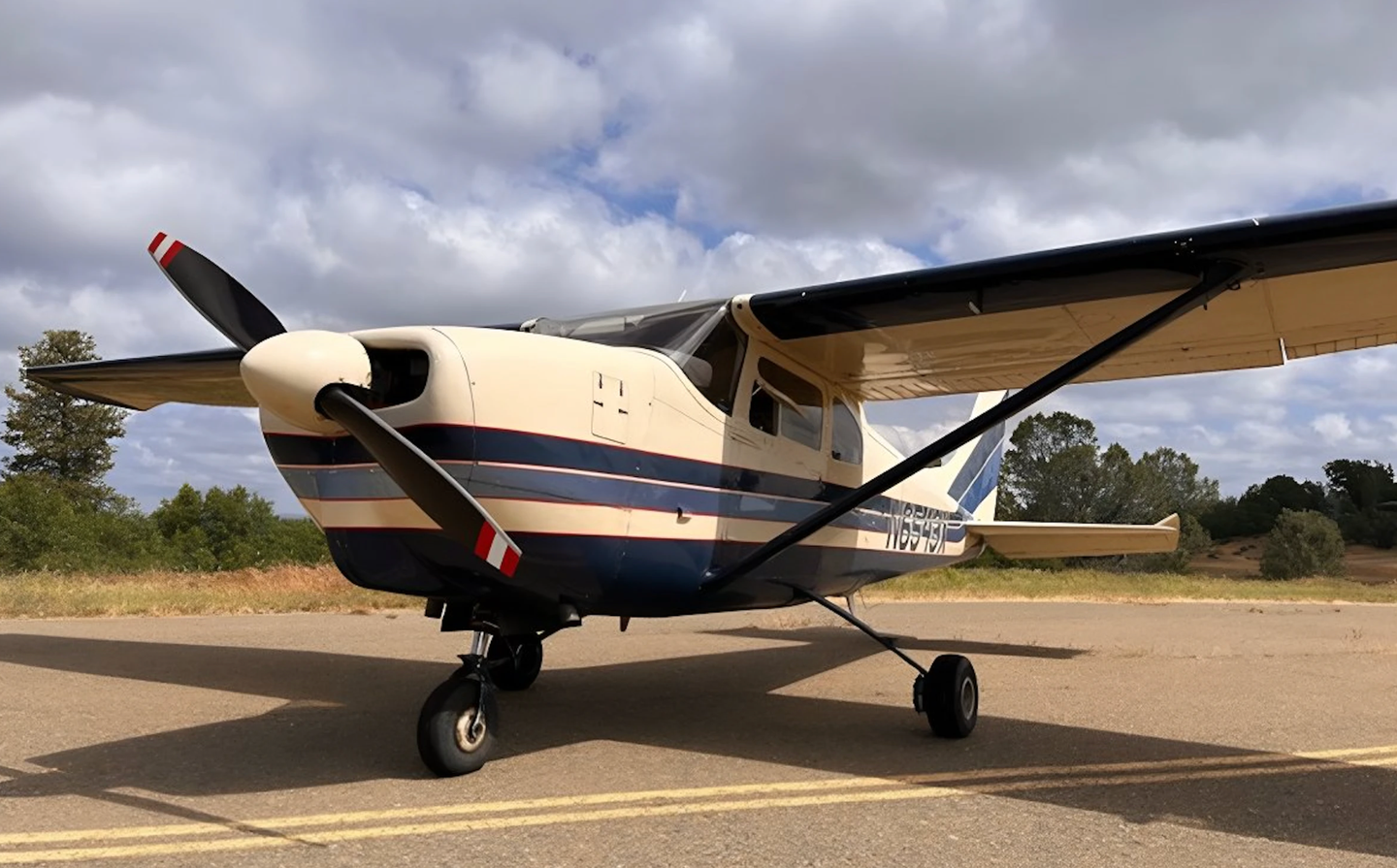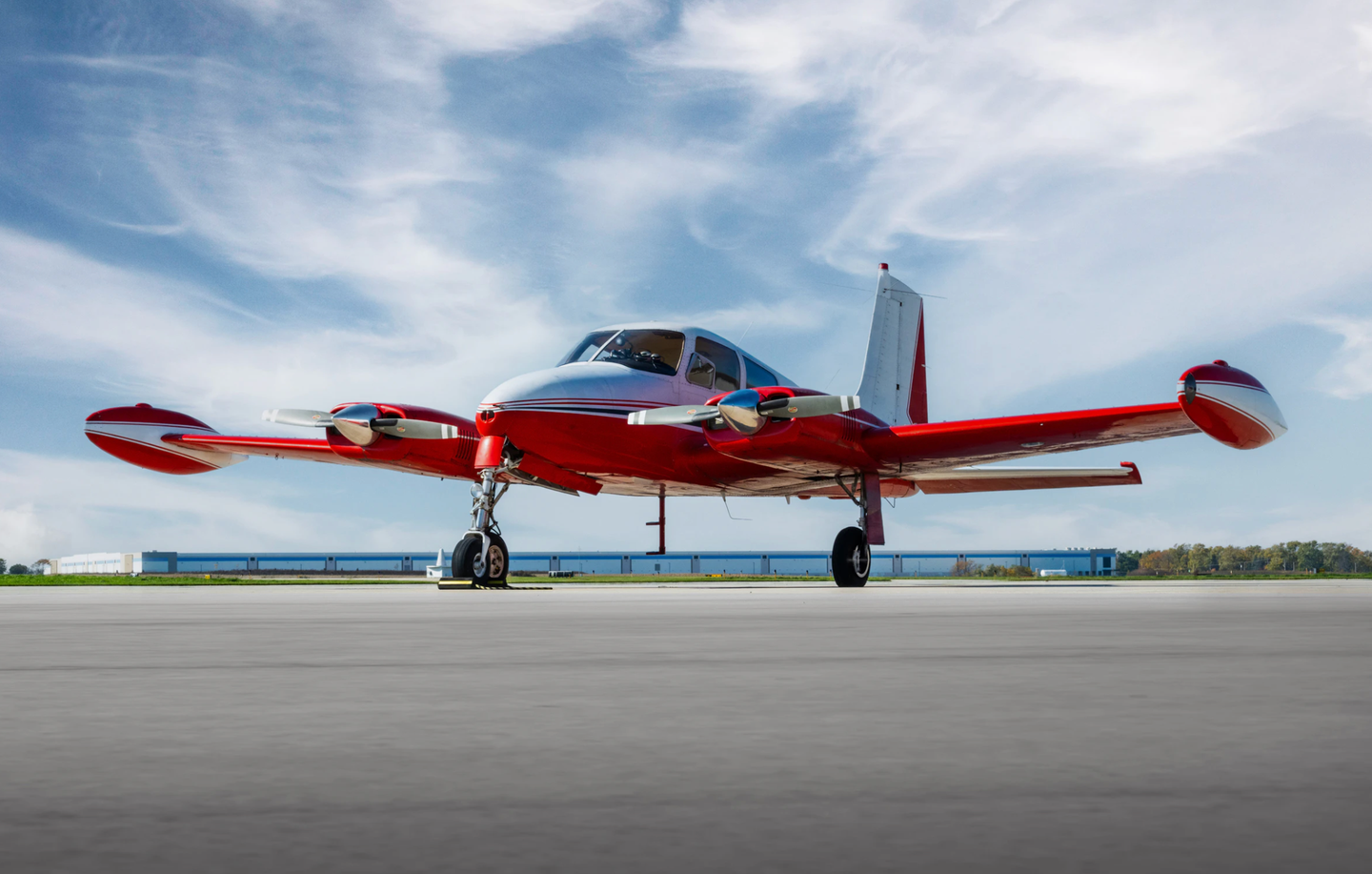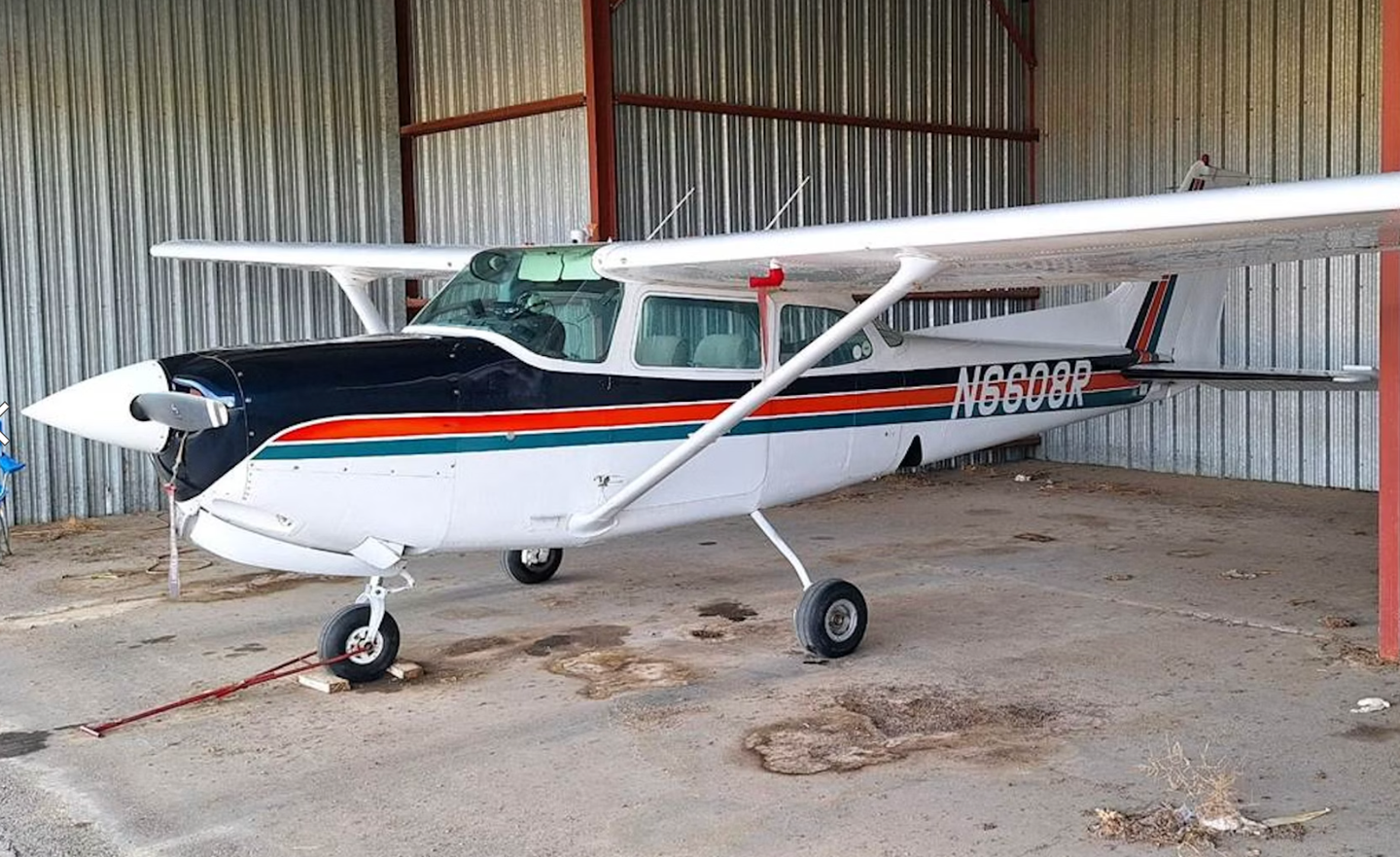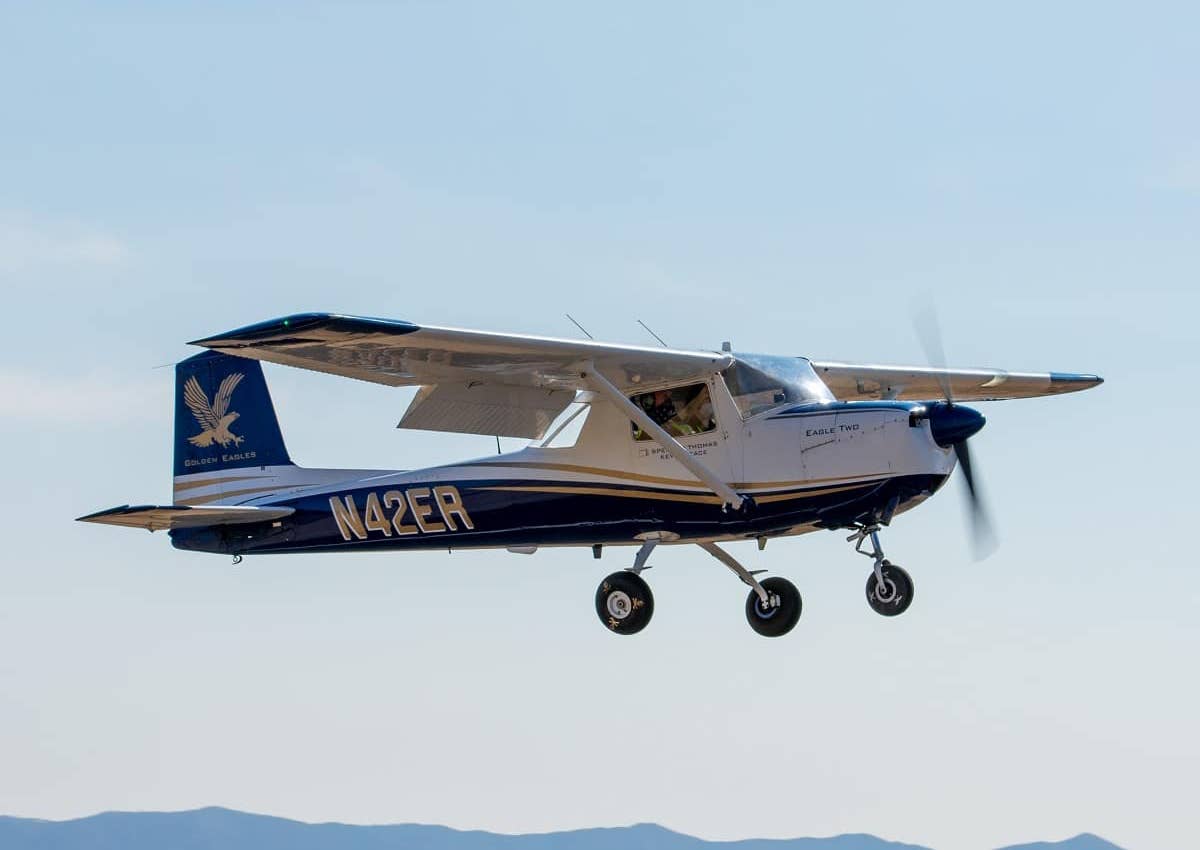Cessna 182 Skylane NXi: We Fly It First
How the world’s most popular utility plane is better than ever
I won't make any bones about it. We were getting our butts kicked as we climbed out on what seemed as though it should be an ideal early spring afternoon. The conditions were CAVU, dry air and severe clear blue skies cradling the green and rolling Hill Country of Central Texas as we headed slightly west in search of lonely runways and empty airspaces. Thankfully, both remain plentiful in the Lone Star State, and while I should say that it wasn't technically spring but still winter, it honestly felt more like summer. The slight haze and mildly gusty conditions presaged a less than velvety ride. We were thankful, at least, that the air cooled as I hand-flew the Skylane to 8,500 feet, just barely above the haze layer and most of the bumps, engaged the autopilot and prepared to go play.
I was flying the 2017 Cessna Skylane with Cessna demo pilot Randy DeLong trying to keep me out of trouble, which, in this case, meant my searching for buttons that weren't where I thought they should be. This newest Skylane has the latest Garmin flat-panel avionics system, the G1000 NXi, and it's a great fit for the 182. It's the third NXi-outfitted airplane I've flown so far, and each one of them has been markedly different from the last. In the 182, NXi is a near clone of the original G1000, but its capabilities far surpass those of the original. While the transition from G1000 to G1000 NXi won't be tough for most pilots, learning the many new capabilities of the system will take some time, unless you're as lucky as I was to get the tutelage of an instructor who knows the new system inside and out, like Randy, who's the most expert G1000 instructor I've flown with.
In terms of cosmetics, the 182 has come a long way since its introduction in 1956, when it was essentially a modification of the classic 180 taildragger, but with the gear swapped around. Those early, largely bare-metal planes had the same straight vertical tail as the 180 and no back window, referred to as a fastback. The outline of the Skylane has changed very little since the early 1960s, but the fit and finish is night and day. Today's Skylane might do the job of a flying pickup truck, but it has the look and feel of a luxury sport sedan. In this regard, among others, the Skylane continues to be the most pleasing and effective compromise in light aviation.
The plane I was flying also happened to be the very first NXi Skylane, the one the company used to ready the system for market. It was not an experimental airplane, however, as many early development models are. In fact, you couldn't tell it from a production airplane, the fit and finish was so good.
The Skylane effect isn't a new phenomenon. People have been gravitating to the 182 for 60 years now. Cessna's trio of general aviation classics, the 150/152, the 172 Skyhawk and the 182 Skylane, accounts for around 75,000 aircraft sales since the mid-1950s. The inaptly nicknamed 150 Commuter is one of the two greatest two-seat trainers ever, the other being, duh, the Piper Cub. The 172 Skyhawk is the ultimate entry-level, four-seat personal plane and the most produced plane of any kind, ever.
The 182 is, well, something else altogether. It's a high-performance plane by many measures, with decent cruise speed, excellent climb capability and terrific useful load. With all this, it somehow retains most of the easy flyability of the other two Cessna light plane stars. More than a few folks started in a 150, stepped up to a 172 and then into a 182, only to stick with that airplane for the rest of their flying lives. It's an easy airplane to love because it gives so much and asks so little. It's cheap to maintain and boasts one of the best safety records in GA history. What's not to love?
Since its reintroduction back in the mid-1990s, the Skylane has been outfitted with the Lycoming IO-540 six-cylinder, in this case the Lycoming IO-540-AB1A5 version. For decades, the Skylane cruised along with the Continental O-470, a low-compression, carbureted, six-cylinder engine that developed a cult-like following among 182 owners. Lycoming is a fellow Textron Aviation company, as is propeller supplier McCauley, so the choice of powerplant components makes great corporate sense for Cessna, and the aviation math is pleasing, too. And the 540-series Lycomings are, if anything, as well regarded as its Continental counterpart, so it's hard to argue that the switch to the Lyc was anything but an even deal, if not an improvement; the 540 boasts a 2,000-hour TBO and no one misses the need for carb heat in the non-fuel-injected Continentals.
The Skylane isn't the fastest airplane in the sky, but at 145 knots, it's not bad for a load hauler that lands slowly, uses little runway coming or going and that can haul an impressive load while going nearly 1,000 miles with seats nearly full. The front seats are not only comfortable, they meet the latest crashworthiness standards, too, something that can't be said for legacy Skylanes. There's plenty of room up front, and the visibility a high-wing plane offers is one of the best selling points of the Cessna piston single brand (with the notable exception of the low-wing TTx).
It had been about five years since I'd flown a new-production Skylane, and that airplane was a G1000-equipped turbo 182 (see sidebar). The airframe hasn't changed notably in that time, with the exception of a cool LED landing light---so the big differences were the normally aspirated engine and the updated avionics.
Cessna hasn't made a big marketing push with the introduction of the NXi suite, which is understandable given all the big news the company has on a number of other fronts, including with the emergence of its Denali turboprop single and the remarkable sales success of its Latitude super-midsized jet.
But NXi is a big deal, and here's why.
As you've read in recent issues of Plane & Pilot, Cessna isn't the first to announce NXi. Cirrus unveiled the new avionics package early in the new year, Garmin announced its retrofit program for existing King Airs around that same time, and Piper announced that its Archer was the first single out of Vero Beach to get the new suite a short time later. And we can expect even more new announcements, likely from everyone who has already TSO'd versions of G1000 in their production airplanes, probably in each model. With the exception of the G2000 touch-controlled TTx model, Cessna has already switched to the NXi platform in all of its piston singles, from Skyhawk to Stationair. There's been no announcement on the Caravan yet, though it's likely only a matter of the timing with that model, as well, as Garmin is phasing out major components of G1000 as it makes the change to NXi.
Flying The Skylane NXi
Before we headed out, I'd created a short flight plan for the trip on my Garmin Pilot app on my iPhone 7 Plus (yes, it's a big phone, but that's great for aviation apps). Randy suggested creating a hold out by our touch-and-go destination of Llano (KAQO), so we could see NXi's impressive ability to pretty much fly the hold for you, so as little as I like to fly holds in real life, I planned to put in one of those, too. Once out at the plane---you can fire up the avionics before you start the plane---I synced my phone to the flight management system via the built-in FlightStream 510, Garmin's wireless information sharing system, and uploaded the plan with the touch of the screen. Once connected, the system would also share information with my phone, including ADS-B weather and traffic data, and if I updated the flight plan on the FMS, it would update on the phone, and vice versa, with safeguards built in to assure that no accidental changes get made.
We had a little wind on the nose taking off, and the Skylane, which needs very little runway to begin with, needed even less. We were flying within seconds, and as we climbed out, I glanced over at the rate of climb and was happy to see better than 1200 fpm at 110 knots. Impressive.
We climbed up through the bumps, and at 8,500 feet headed dead west, we were moving along at an impressive clip over the ground and in terms of true airspeed. We were light, as is ever the case with flight tests of new airplanes, and even though it was a little warmer than standard, our cruise numbers were a good bit faster than book. With power set at 2400 rpm (top of the green) and manifold pressure at 21.7, the best we could pull at 8,500 feet, we were seeing between 147 and 151 knots true. With the engine leaned to 14.5 gph and at 2350 rpm, we were still seeing 145 knots true at that altitude, but we were a bit light. Bottom line: The Skylane does at least what Cessna says it will.
NXi
The whole time NXi was doing its thing. The screens are brighter, and while Garmin says the resolution is the same on the original G1000, everybody who's flown it, myself included, seems to think they're brighter on NXi. On the SR22 and on the King Air I flew with the new avionics system, there were separate integrated keypads to enter FMS data, tune the radios or enter a transponder code. Not so on the 182, which relies on a combination of bezel keys and dedicated accessory keypads, like the autopilot controller, as an interface. For those of you who've flown G1000 before, it will be old home days. The logic of the system remains largely identical.
The look and feel, on the other hand, is anything but. New, larger and easier-to-read symbology makes the displays seem more modern and friendlier to the eye, and the many added features and usability considerations make good on that appearance. There are new digitally driven moving map displays, VFR and IFR, and an amazing Vertical Situation Display that I don't know how I lived without all these years. The latter shows you a colorful graphic representation along the bottom of the MFD of your path over the terrain and with regard to waypoints, too. On approach, it shows you the altitudes for each segment of the approach, which means there's no confusion about what altitude to fly when, as there can be with a conventional 2-D representation.
There's also simplified vertical nav capabilities, and night mode for both, with colors reversed for better viewing at night. The system "decodes" the frequencies you've selected on the integrated comm radio, so instead of seeing just the digital dullness of "119.0," the NXi lets you know you're speaking with "Austin Approach," not that I've ever forgotten who I'd just been told to contact while tuning the frequency just right. Now I have a reminder.
As every new plane should, the 2017 comes standard with ADS-B In and Out; you can select visual approaches for runways with or without instrument approaches associated with them, which means, yes, that you could theoretically homebrew an approach to an airport that didn't have one, though you couldn't legally fly it, not to mention the fact that the FAA is better at designing approaches than we are, unless you design approaches for a living, that is, so we should all bear that in mind, as well. But as a VFR guide to a stable approach, it's a fabulous utility that will help you ensure you've got the right runway at the right airport.
And, finally, at least for my list of NXi features here, there's the optional (get it) Surface Watch, which is an exceptional aid to safe ground operations. Surface not only shows your exact location on the ground at any charted airport, which is thousands of them, but it has system logic to prevent you from taking off on the wrong runway. To demonstrate the system, we entered our departure for Runway 8 even though we were taking off on Runway 26. As we began our takeoff roll, the system alerted us of our error in plenty of time for us to abort the takeoff, even if the wrong runway had been much shorter than the intended. It's not a miracle cure, but it's a huge hedge against such a disaster.
Back In The Air
The hold I'd created along our route of flight, which was as easy to do as telling the FMS where you want to hold, what direction you want to hold in, whether you want to fly timed legs or measured legs, as well as the time instructions for the hold. It sounds more complicated than it is. On our course line, you could see the hold I'd created plotted in to the course, with the direction and entry pattern clearly shown. And, guess what, if you let it, the GFC700 integrated autopilot will fly it for you hands off, as it will a missed approach, though your hands will stay busy managing the flaps and power, it goes without saying.
At Llano Municipal, I flew a few touch-and-goes and a full stop to get the hang of landing the new Skylane in a bumpy crosswind. As you've likely heard before, the nose of the Skylane feels much heavier than that of the Skyhawk, so you accommodate for that in your technique. Being on top of the trim is a must unless you want to engage in a low-level wrestling match as you land, which you don't. And compared to a low-wing airplane, the Skylane feels the gusts and bumps more, so you need to be ready to correct for them, but it's a feel you develop after you've flown these high-wing Cessnas for a while.
After my last touch-and-go departure at Llano, I turned back toward San Marcos, climbing and, with Randy's help, looking for traffic. We didn't see any, but the system did. There were numerous targets on the TAWS, all of them converging on Llano for some inexplicable reason. Deciding that discretion was the better part of not getting hit by another airplane, I diverted to the north until the conflicts had passed, and it occurred to me that they might never have seen us, visually or electronically.
Once the traffic was behind us, we climbed up to 5,500 feet in lieu of 7,500 feet, which was a mistake. While the Central Texas countryside was even prettier from a couple thousand feet lower, including the full-to-the-brim Highland Lakes along the way, the turbulence was a bear. We made a beeline to San Marcos.
Well, not an exact beeline, because we decided to fly the RNAV for Runway 8 with the course reversal, just to see the system both chart and fly it. For an instrument pilot flying for transportation, the capabilities of G1000 are extraordinary; the powers of NXi are even more so.
My final landing of the day was just okay, which made me perfect for the day in not having any terrible landings and in not having any really good ones, either. Ah, the bumps and gusts. That's why I usually like to do these flights early.
With the 2017 Skylane, Cessna has taken a great airplane that's far more sophisticated than ever and with more safety features than ever and given it a great avionics upgrade. For those of us who love the Skylane, the latest version is testament that a great design is, if not timeless entirely, then at least one that can be around for 60 years and keep delivering everything it's famous for. And with the best electronics and safety utilities in a Skylane ever, the 2017 model delivers a whole lot more.
Other Skylanes?
These days, the only Skylane is the normally aspirated gas-piston model. But what happened to the two other 182s, the turbocharged gas-piston and the turbodiesel models? After all, not too long ago, they were a core part of the Cessna piston single roadmap.
It's been a few years since the turbodiesel Skylane has been in the headlines. That plane, which Cessna dubbed the 182 J-TA (an acronym that sounds like "Jet A", the fuel type the engine uses), earned a good number of precertification orders before Cessna stopped taking orders and put the program on hiatus. The company took that step only after struggling to fix problems with the engine's turbocharger and to tame a too-high idle, which made it difficult on rollout to get the high-lift 182 to stop flying and just land. The engine, which is manufactured by French company SMA, is certificated in Europe, and Cessna was trying to earn FAA type approval for it when it reluctantly put the program on the far back burner while it focused on other programs.
One casualty of the J-TA program was the turbocharged gas-piston model, the T182-T, which Cessna stopped offering, presumably because the turbodiesel model would take its place in the lineup. Despite the JT-A's indefinite delay, Cessna hasn't brought back the once-popular Turbo gas-piston Skylane, though the company doesn't seem to have any plans to bring back the turbo, perhaps indicating its belief in the ultimate promise of a turbodiesel version despite the fitful genesis of that program.
The airplane we flew for this report was the first production Skylane NXi. It was outfitted with the Garmin G1000 NXi flat-panel avionics suite with dual color displays, Garmin GFC700 integrated autopilot, dual ADAHRS, standard ADS-B In and Out, enhanced digital HSI, Vertical Situation Display, Visual Approach, Surface Watch ground operations utility and Sirius XM Weather.
Check out the newest Skylane and other fantastic single-engine airplanes in our latest Piston Singles Buyer's Guide.

Subscribe to Our Newsletter
Get the latest Plane & Pilot Magazine stories delivered directly to your inbox


